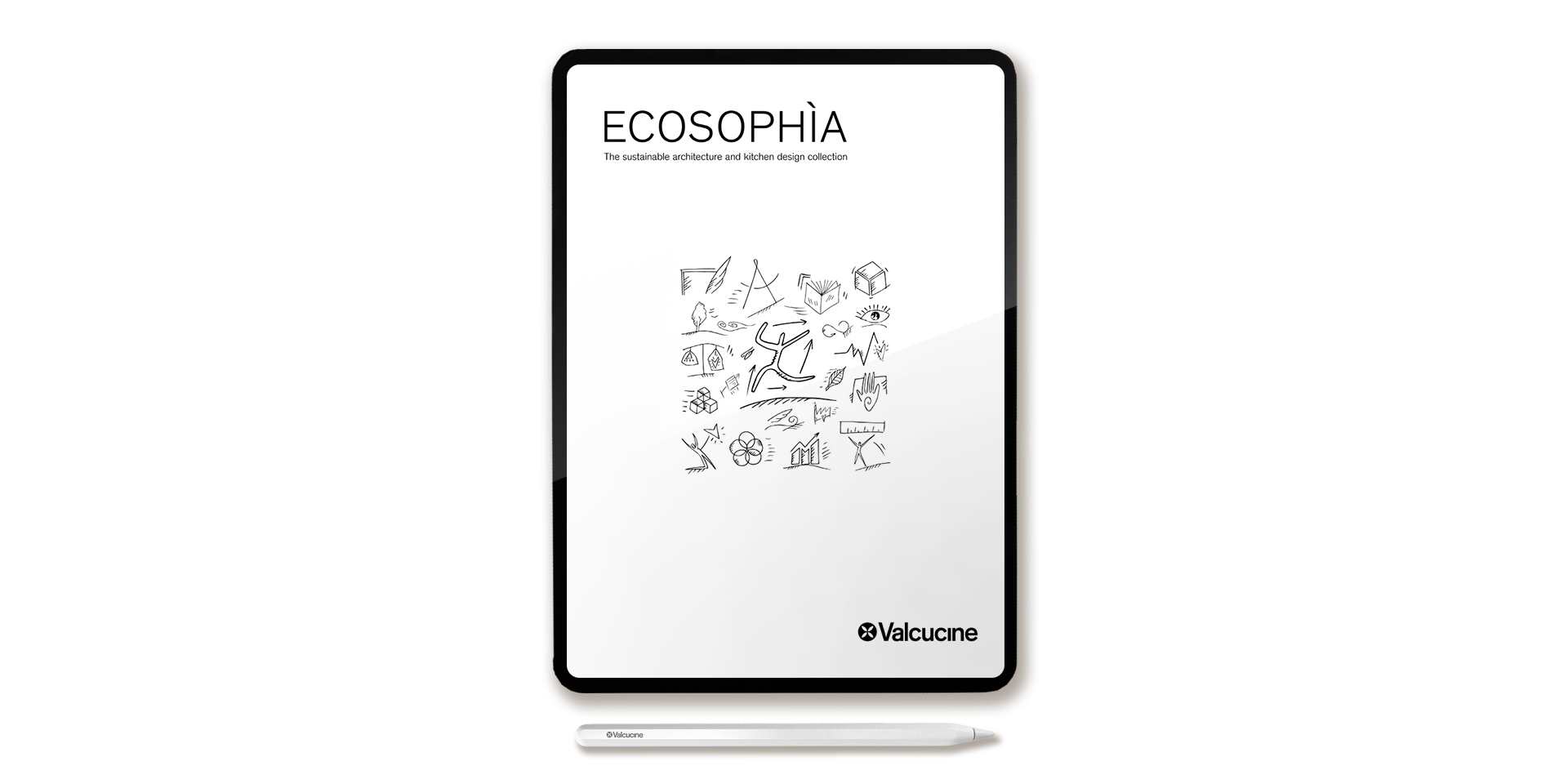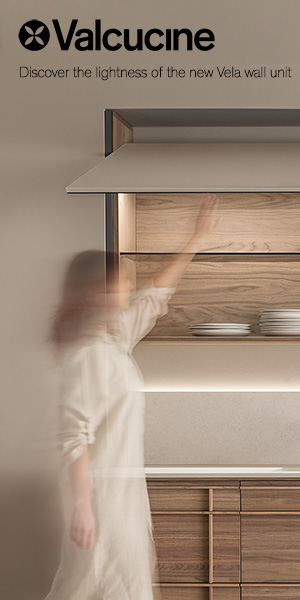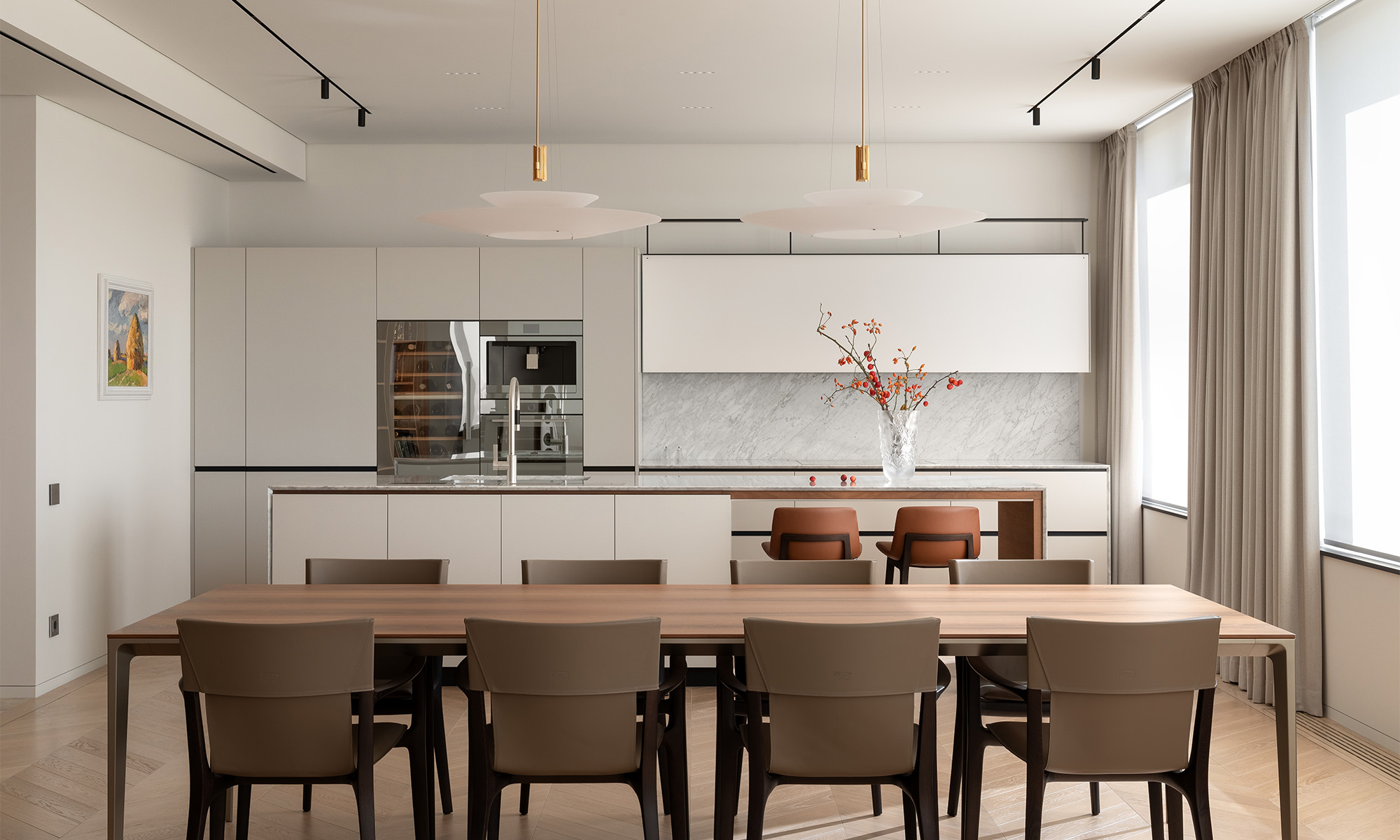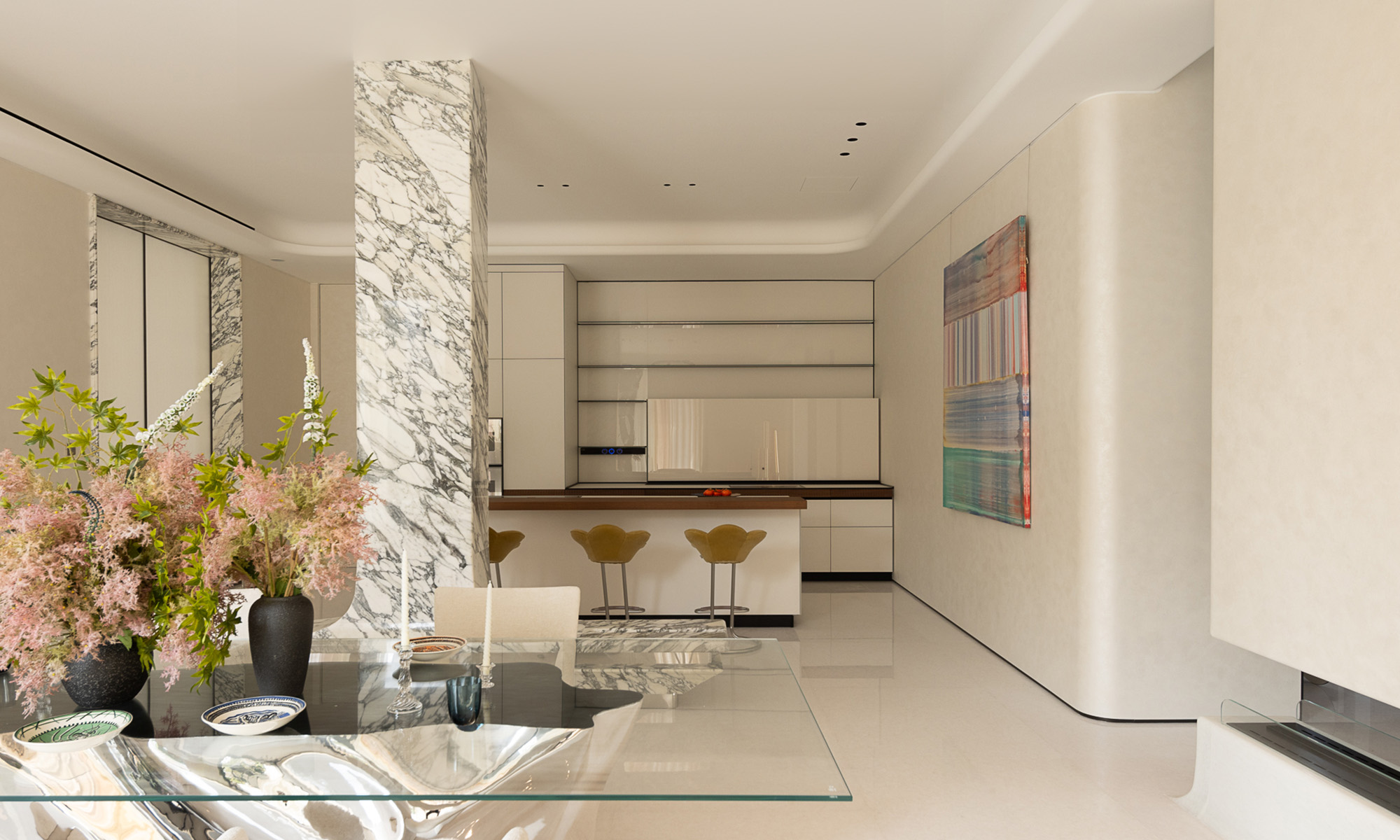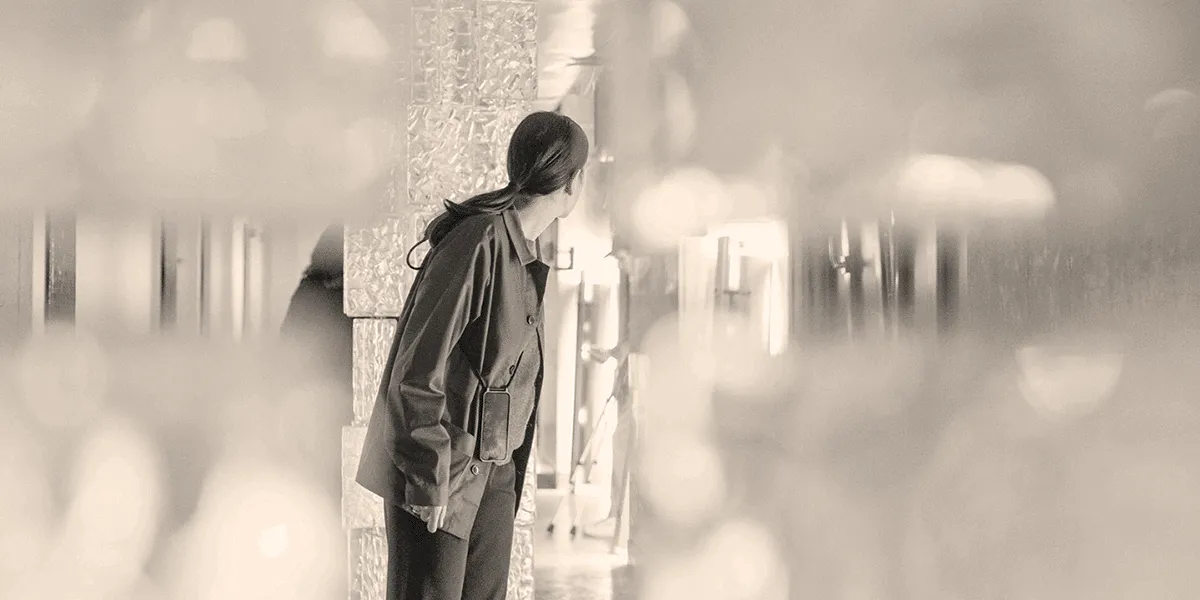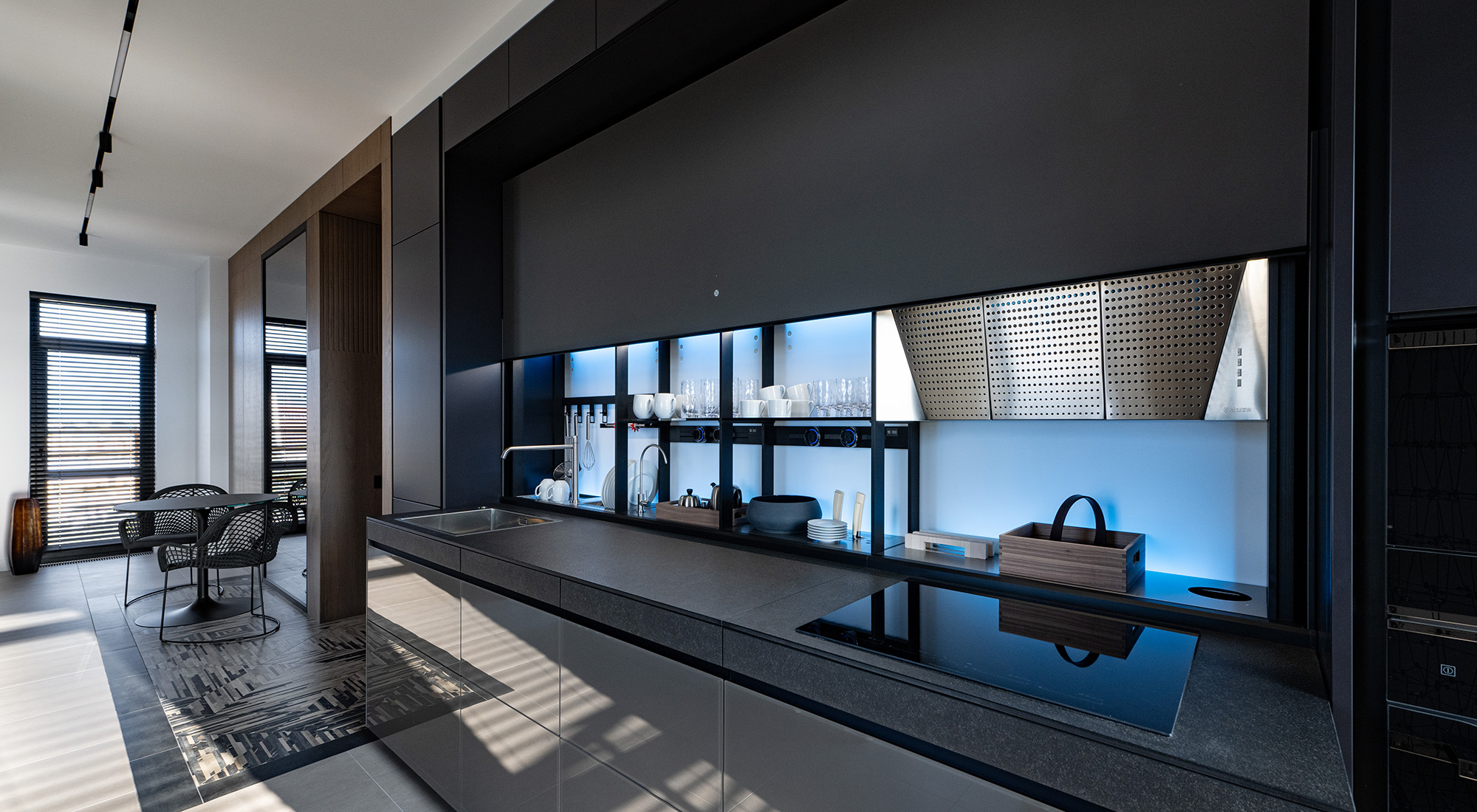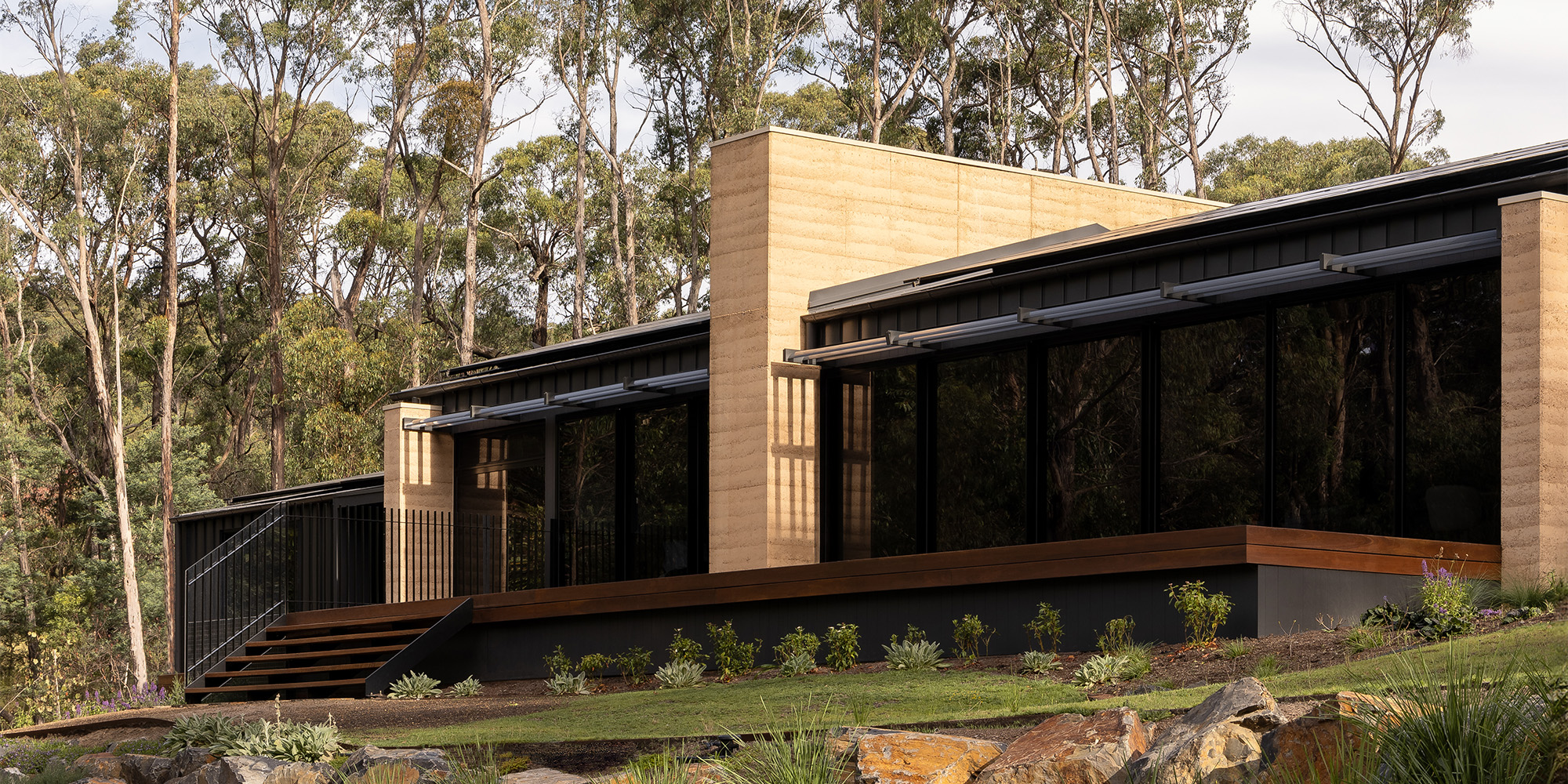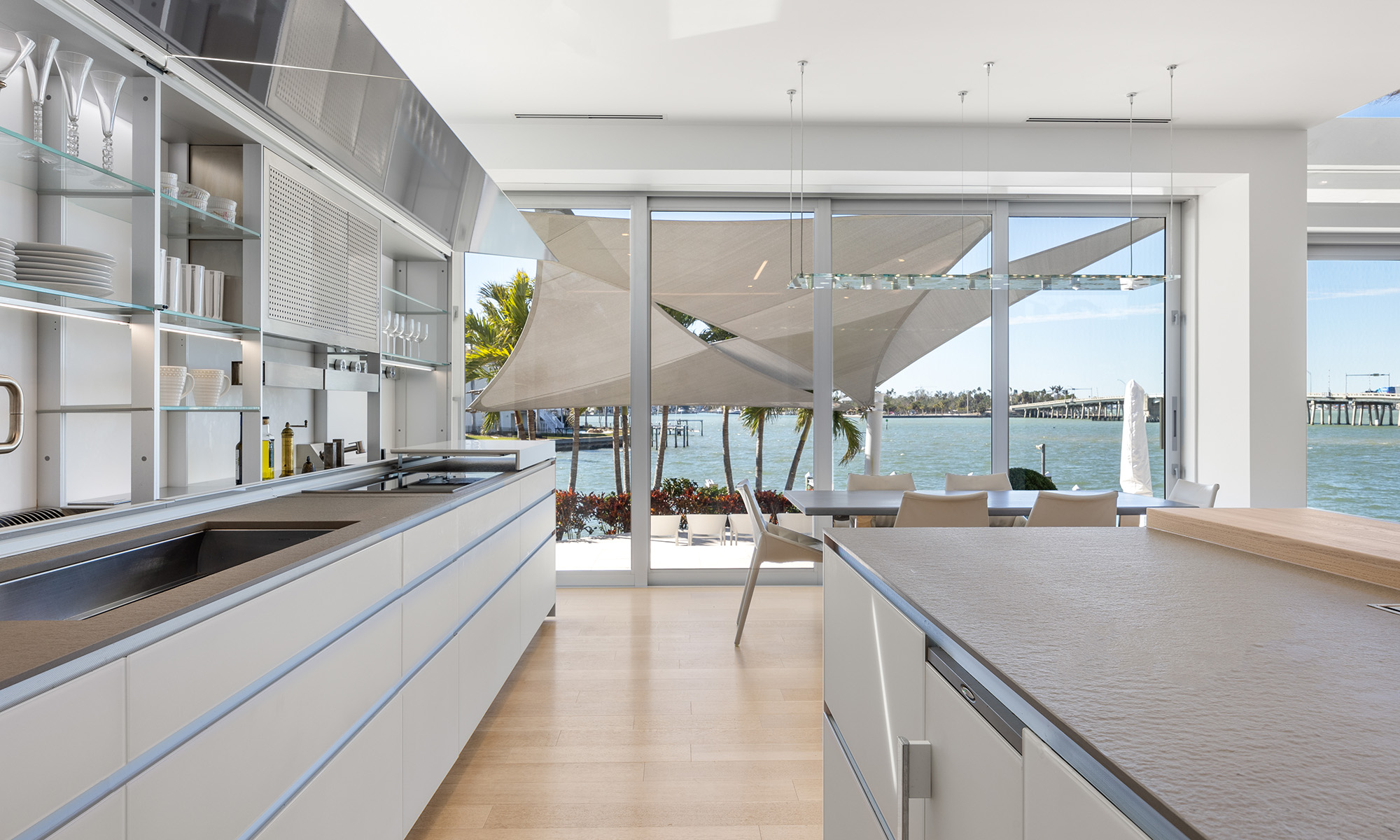ECOSOPHÌA – The sustainable architecture and kitchen design collection
For our new catalogue we have decided to imagine our kitchens installed in sustainable and innovative homes, in contexts that represent the new frontiers of contemporary and sustainable architecture, that are an ongoing source of inspiration for a better future. Instead of choosing aseptic environments, we decided to identify a series of sustainable architectures within which to place consistent design products.
Our history shows the extent to which sustainability has been an integral part of our company's identity since it was foundedin 1980. Our search for a responsible development model has given rise to projects, intuitions and solutions that – with a view to ongoing improvement – have revolutionised kitchen conventions, to the extent of becomingtruly groundbreaking.
The self-sufficient home
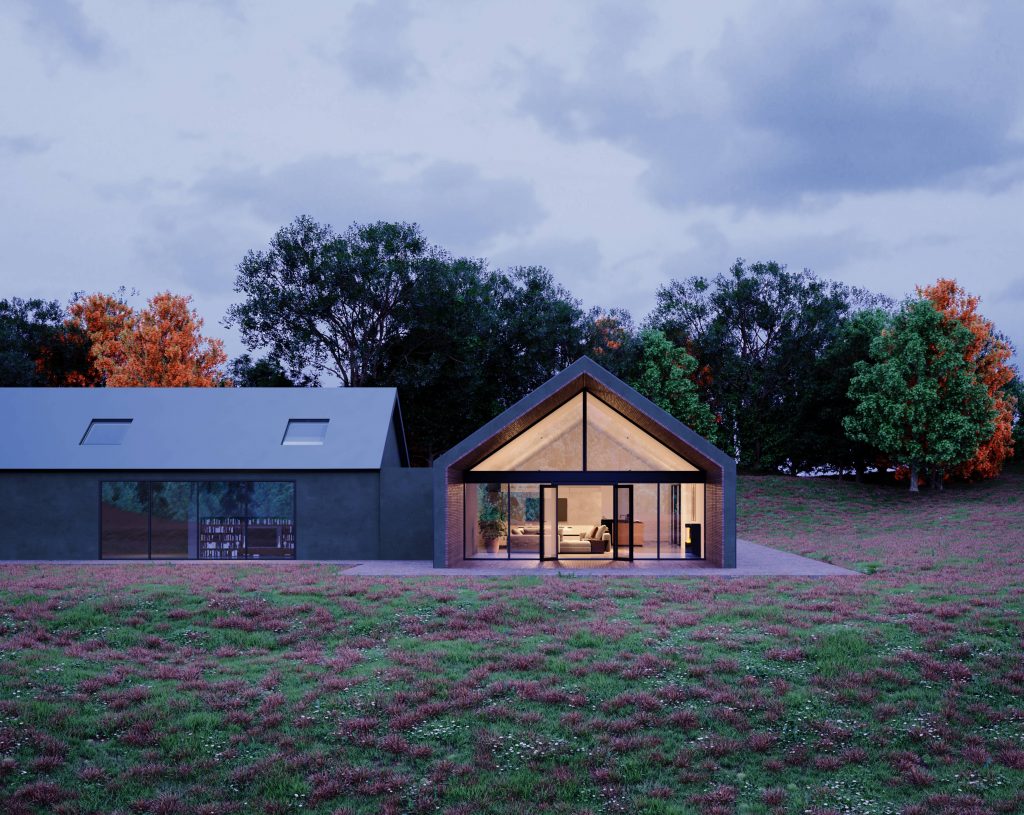
The Passive House is a design and construction standard featuring low energy consumptions and top-quality comfort. Comfort, Sustainability, Efficiency and Innovation are the key words that distinguish this new way of living.
In this type of home, every effort is made to reduce the energy consumed to heat and cool the rooms by efficiently exploiting natural elements such as the Sun, the Earth, air and water. This is made possible by employing a series of construction techniques and specific materials that work together so that the house “passively” – i.e. spontaneously – receives the energy it needs, almost without using traditional heating and cooling systems. The shape and aspect of the house, the type of plants chosen, the insulating materials, thermal doors and windows, controlled airing systems and insulated walls: all these elements contribute to creating a comfortable indoor climate all year long.
Rehabilitation and conservation of historical buildings
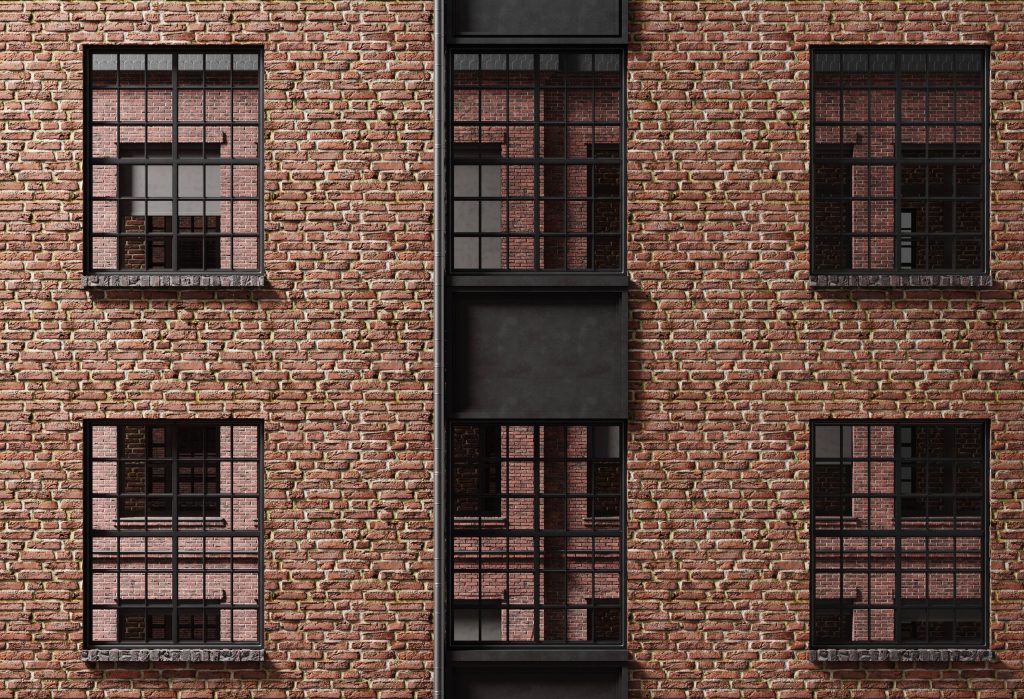
In architecture, sustainability doesn't just mean creating new, super-efficient buildings. In fact, it is a well-known fact that the building process and the production of building materials require lots of energy and generate large quantities of waste. It is therefore very important to preserve existing buildings before creating new ones.
Architecture – both historical and industrial – is a precious building heritage that must be protected for its cultural value. Nevertheless, not all these buildings are compatible with modern sustainability and efficiency standards which is why they must be renovated before they can be inhabited again. Sustainability guidelines point out that historical buildings are often intrinsically sustainable, thus meeting durability and long-life parameters.
Sustainable architecture finds solutions capable of raising buildings to modern standards without jeopardising their historical value and extending their life in an efficient and sustainable way. From this standpoint, reusing and reinventing existing buildings can become the testing ground for a more responsible building system.
LEED certified houses
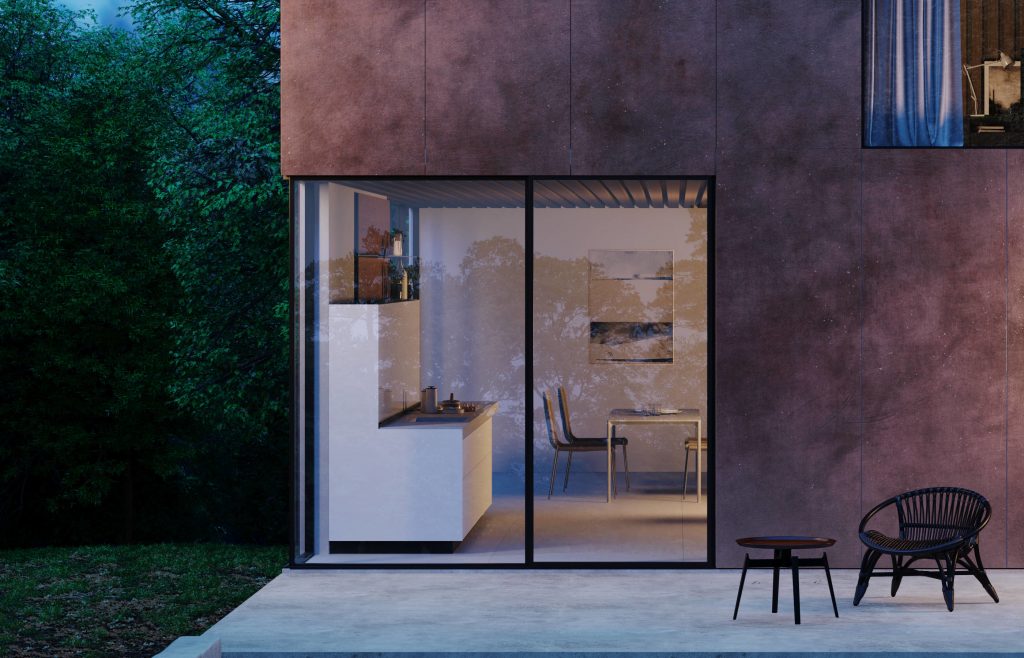
The LEED (Leadership in Energy and Environmental Design) label is currently the most widespread green architecture certification system in the world. It can be applied to any building or interior space and provides a stringent standard to make healthy, very efficient and affordable ecological structures. A home designed in line with LEED standards offers many energy-saving benefits: respect for the surrounding environment; management of the water, materials and resources used; the quality of the indoor air and the degree of innovation, even during the design phase.
By respecting LEED protocol criteria, buildings feature lower consumptions and more comfortable interiors that contribute to the wellbeing of their inhabitants. LEED certification for buildings consists in a fundamental contribution to managing climate change and to supporting more sustainable communities. It can play an important role in reaching the goals set by the ESG (Environmental, Social and Governance) paradigm, a concept acknowledged as a benchmark to assess the sustainability of businesses and, consequently, of investments.
Timber architecture
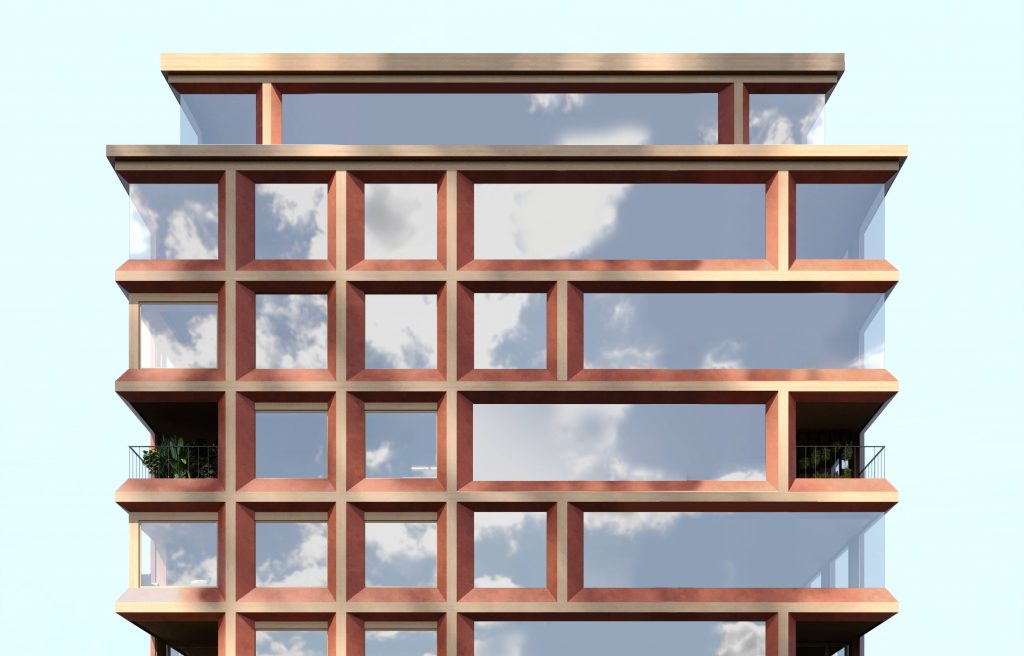
Due to its versatility, lightness and resistance, wood is enjoying a new lease of life in contemporary architecture thanks to the development of improved building techniques that can make the most of the great potential of this material. Wood is the ultimate renewable material and is easier than others to transport and handle; it also offers remarkable advantages in terms of construction speed.
Timber buildings generate less waste than steel and concrete ones and can contribute to reducing CO2 emissions. Especially if it is tall, a timber building can be from four to five times lighter than a traditional one, making it more cost effective with a minimal impact on the environment. Timber structures and partitions for interiors can be left bare, forgoing the need for additional claddings or coatings and combining excellent technical performances with aesthetic features in order to surprise sustainable architecture results.
Sustainable architecture declined in a city forest
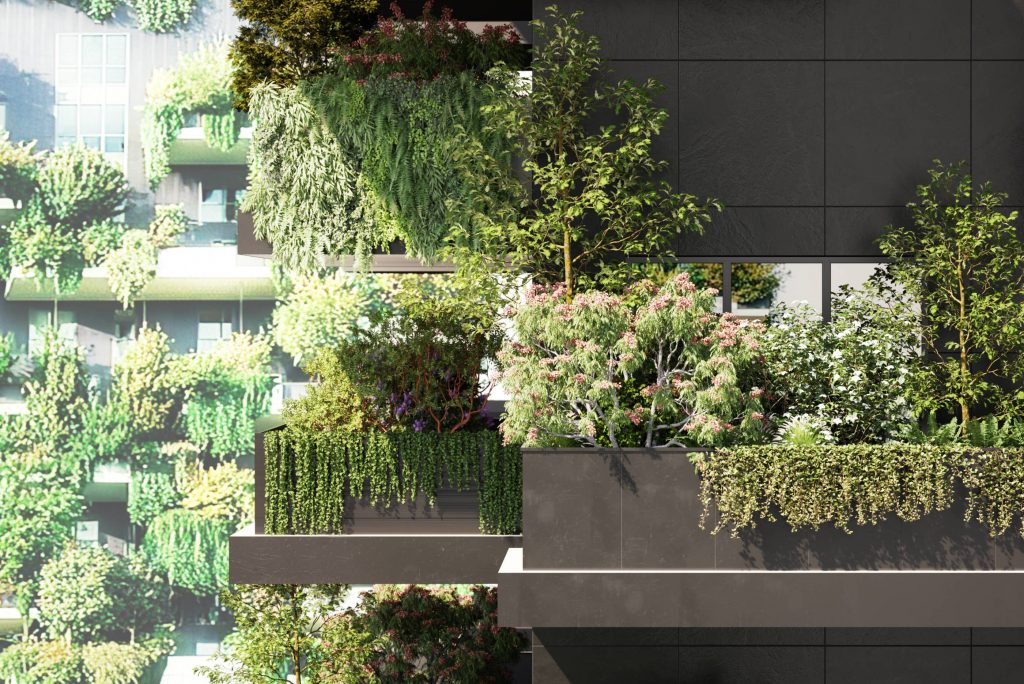
When space becomes an increasingly precious resource, especially in rapdly-expanding urban contexts, one way to increase green areas could be to construct them vertically, thus freeing the land for other purposes. The “vertical forest” concept has become a sustainable residential model, a metropolitan reforestation project that contributes to regenerating urban environments and their biodiversity. Adding plants to the outside of buildings increases the quality of the air in the city as well as the energy efficiency of the actual buildings. Different plant species contribute to creating a special microclimate that produces humidity and oxygen, absorbs CO2 particles and particulates. A variety of plants and trees can also attract birds, butterflies and insects, favouring the spontaneous return of fauna to metropolitan areas. And let's not forget aesthetics: these green architectural compositions change with the season, giving the city an appearance that never repeats itself as the year unfolds.
Sustainable architecture in harmony with nature
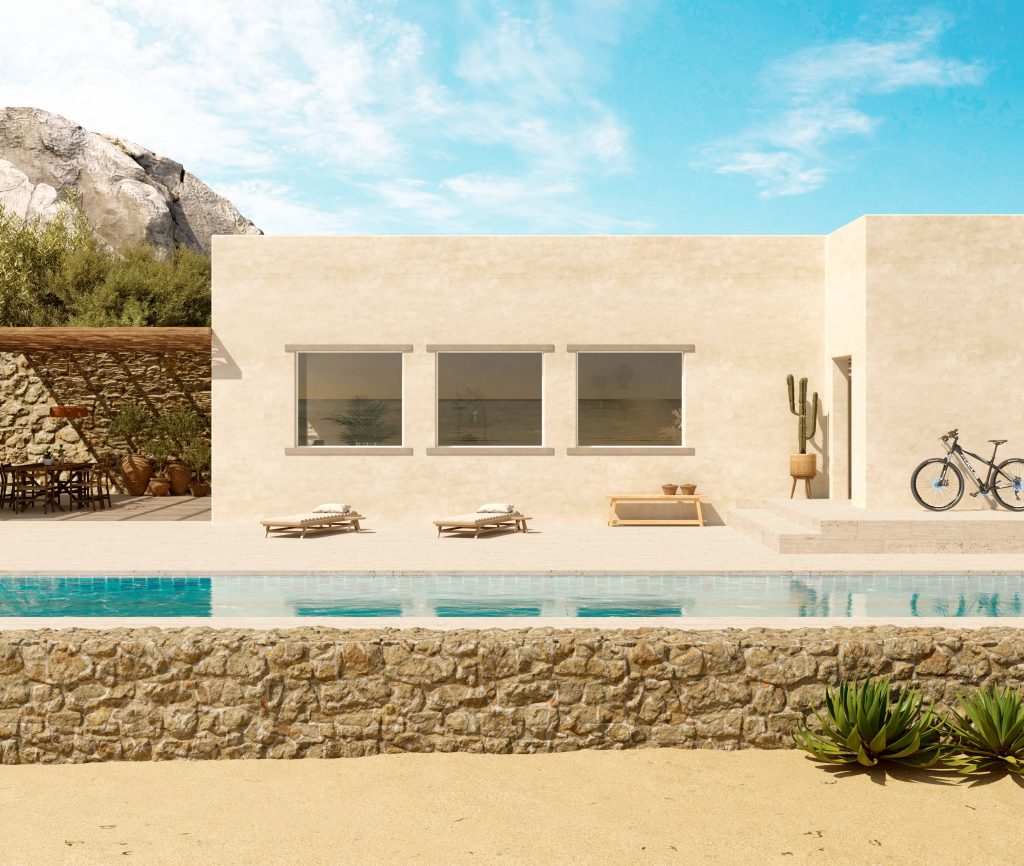
There has always been a very strong bond between architecture and nature which has accompanied man from ancient times to the present day. One of the goals for the future is to create buildings of which nature is an essential part, instead of using it to merely embellish or decorate them.
Projects are hatched in which urban constructions and nature blend in a new balance to the extent of seeming spontaneous products of the earth itself into which they become mimetically camouflaged.This vision of architecture translates into large windows overlooking open spaces, walls that prevent or direct vision, membranes that make light vibrate, natural textures and veins, as well as materials with a strong tactile dimension. The result is an environment that is once again capable of conveying an ancestral sense of freedom, as well as offering a feeling of profound wellbeing born from being in communion with nature and with oneself.
The new Catalogue “ECOSOPHÌA-The sustainable architecture and kitchen design collection” is now online!
LATEST POSTS
